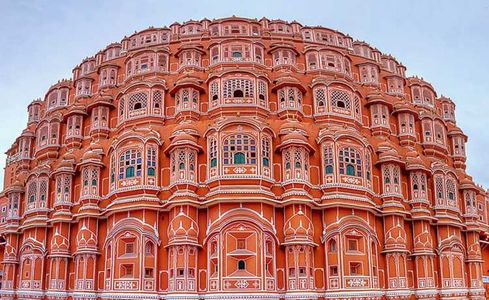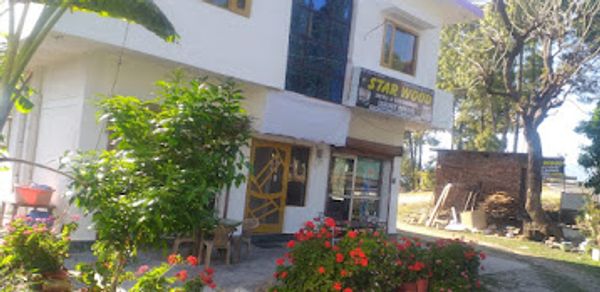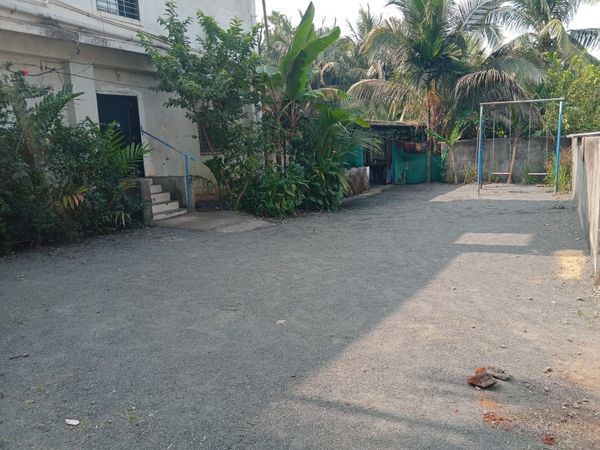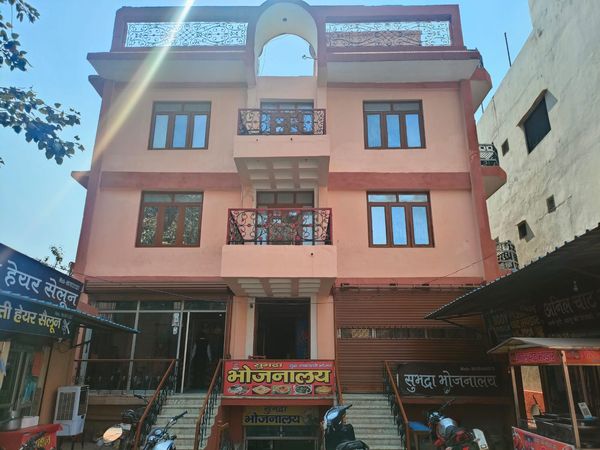Hawa Mahal: The Majestic Palace of Winds in Jaipur, Rajasthan
 Akash Shree
02 Jan, 2025
11 mins read
1041
Akash Shree
02 Jan, 2025
11 mins read
1041

One of the most iconic and beautiful landmarks in Jaipur, the capital city of Rajasthan, is the Hawa Mahal, also known as the Palace of Winds. This magnificent palace, with its unique architecture and fascinating history, stands as a symbol of the grandeur of Rajasthan's royal heritage. Built in 1799 by Maharaja Sawai Pratap Singh, Hawa Mahal is an architectural marvel that continues to attract tourists and history enthusiasts from all over the world. It is not just a palace, but a testimony to the intricate craftsmanship and cultural richness of Rajasthan.
Hawa Mahal: Location and Architecture
The Hawa Mahal is located in the heart of Jaipur, on the bustling Badi Chaupar, near the famous City Palace and Jantar Mantar. Its strategic location makes it a must-see landmark for anyone visiting Jaipur, and it stands as a prominent feature of the city’s skyline.
The architecture of Hawa Mahal is what sets it apart from other monuments in Rajasthan. It is built in the shape of a honeycomb or a beehive, with 953 small windows (called jharokhas) adorned with intricate latticework. These windows were designed to allow the royal ladies of the court to observe the street processions, festivals, and everyday life without being seen by the public. This architectural design was also intended to provide the women of the royal family with a cool breeze, as the latticework facilitated air circulation throughout the building, earning it the name "Palace of Winds."
Hawa Mahal is a five-story building constructed using pink sandstone, which is characteristic of Jaipur's architecture. The façade of the palace is a blend of Islamic, Rajput, and Mughal styles, reflecting the cultural amalgamation of the period. Its ornate windows, delicate arches, and numerous small balconies create a stunning visual that is both delicate and grand.
Hawa Mahal’s History and Purpose
The construction of Hawa Mahal was initiated by Maharaja Sawai Pratap Singh, who was inspired by the architecture of the Khyber Pass and the intricacies of Rajput designs. According to local legends, the Maharaja wanted a structure that allowed the royal ladies to watch the street life below without being seen, as was the custom in the royal households. This was essential in a time when the royal women followed a strict veil tradition, as they were often secluded from public view.
The building was completed in 1799, and its unique design allowed the women of the palace to observe city life, festivals, and processions, which were an important part of the cultural and political life of Jaipur. The design of the windows helped maintain the privacy of the women, while still giving them the pleasure of viewing the city and its activities. It is believed that the palace was constructed for Rajput royal women who were not allowed to step out in public, thus offering them an unobstructed view of the outside world.
Over time, the Hawa Mahal became a significant part of Jaipur's royal heritage and an essential attraction for visitors from all over the world. It is also said that the building was constructed not just for the enjoyment of the royal family but as a symbol of power and influence in the region. Today, it stands as one of the most visited attractions in Jaipur and is an architectural treasure for historians and enthusiasts alike.
Hawa Mahal: Design and Structure
The Hawa Mahal is constructed in pink sandstone, in keeping with the color scheme of Jaipur, which is often referred to as the "Pink City" due to the prevalence of this color in its architecture. The most striking feature of the building is its elaborate façade, which consists of 953 small windows or jharokhas, each intricately designed and arranged in a honeycomb pattern. The windows are decorated with fine latticework, allowing for privacy while providing excellent ventilation and natural cooling—a necessity in the hot desert climate of Rajasthan.
The five-story building consists of a central courtyard surrounded by open halls and galleries. The top stories of the building are narrow and rise steeply, while the lower floors are more spacious. The structure is built in a combination of Rajput, Islamic, and Mughal architectural styles, with large windows, arches, and a multitude of pillars and balconies. The entire design is highly ornate, with delicate stone carvings, sculptures, and intricate decorative elements.
The palace has a long corridor that runs through its upper floors, leading to the windows, from which the royal women could watch the bustling life on the streets below. These corridors are well-lit and airy, and they provide spectacular views of the City Palace, Jantar Mantar, and the surrounding landscape.
While the exterior of the building is ornate, the interior is relatively simple, with rooms that were meant for the royal ladies to stay in. The interiors of the palace are adorned with paintings and mosaics, reflecting the Rajput style of art. The building features several doorways, arches, and pillars that are beautifully carved and decorated.
Cultural Significance of Hawa Mahal
The Hawa Mahal stands as a symbol of Rajasthan's royal heritage and showcases the brilliant artistry and cultural richness of the region. The intricate stonework, frescoes, and carvings on the walls tell the story of the grandeur and opulence of the Rajput kings, while the design reflects the desire to protect the royal women’s privacy in a time when such traditions were strictly followed.
The Hawa Mahal is not just a beautiful structure, but a reflection of the social and cultural norms of the time. It reveals the practices and lifestyle of the Rajput royalty and how the women's quarters in the palace were designed to ensure that they remained invisible to the outside world, yet could enjoy the beauty of their surroundings. The structure, in a sense, bridges the gap between public and private spaces, embodying the complex dynamics of life in the royal court of Jaipur.
Hawa Mahal: Visiting and Attractions
The Hawa Mahal is a prominent tourist attraction, drawing thousands of visitors every year. As one of the most photographed monuments in Rajasthan, it
offers a stunning backdrop for tourists looking to capture the beauty of Jaipur. The best time to visit the Hawa Mahal is during the early morning or late afternoon, when the sunlight creates a warm, golden glow on the pink sandstone façade. It’s also the perfect time to capture the monument’s grandeur in photographs.
Inside, visitors can explore the museum housed on the top floor of the building. The museum features artifacts related to the Rajput period and showcases the royal lifestyle and culture. You can also climb to the rooftop for panoramic views of Jaipur, including the City Palace, Jantar Mantar, and the busy streets below.
Visitors can walk through the narrow corridors, step out onto the various balconies, and marvel at the view of Jaipur’s vibrant markets and city life. The breeze that passes through the windows provides a refreshing experience and allows visitors to understand the origins of the palace's name, "Hawa Mahal."
Hawa Mahal: Timings and Entry Fees
The Hawa Mahal is open to visitors every day of the week, except for holidays. The visiting hours are from 9:00 AM to 5:00 PM, allowing ample time for exploration. The entry fee for Indian tourists is approximately ₹50 per person, while for foreign tourists, it is around ₹200. There may also be an additional fee for photography.
Conclusion
The Hawa Mahal is undoubtedly one of the most beautiful and iconic monuments in Jaipur and Rajasthan. Its unique architecture, historical significance, and stunning design make it an unmissable part of any visit to the city. Whether you are fascinated by the grandeur of Rajput architecture, the history of Rajasthan's royal families, or simply enjoy exploring majestic monuments, the Palace of Winds offers a perfect blend of history, culture, and architectural beauty. The Hawa Mahal continues to stand proudly in Jaipur, reminding visitors of the opulence of a bygone era and the cultural richness of Rajasthan.
Written By:
Akash Shree



Hotels at your convenience
Now choose your stay according to your preference. From finding a place for your dream destination or a mere weekend getaway to business accommodations or brief stay, we have got you covered. Explore hotels as per your mood.


